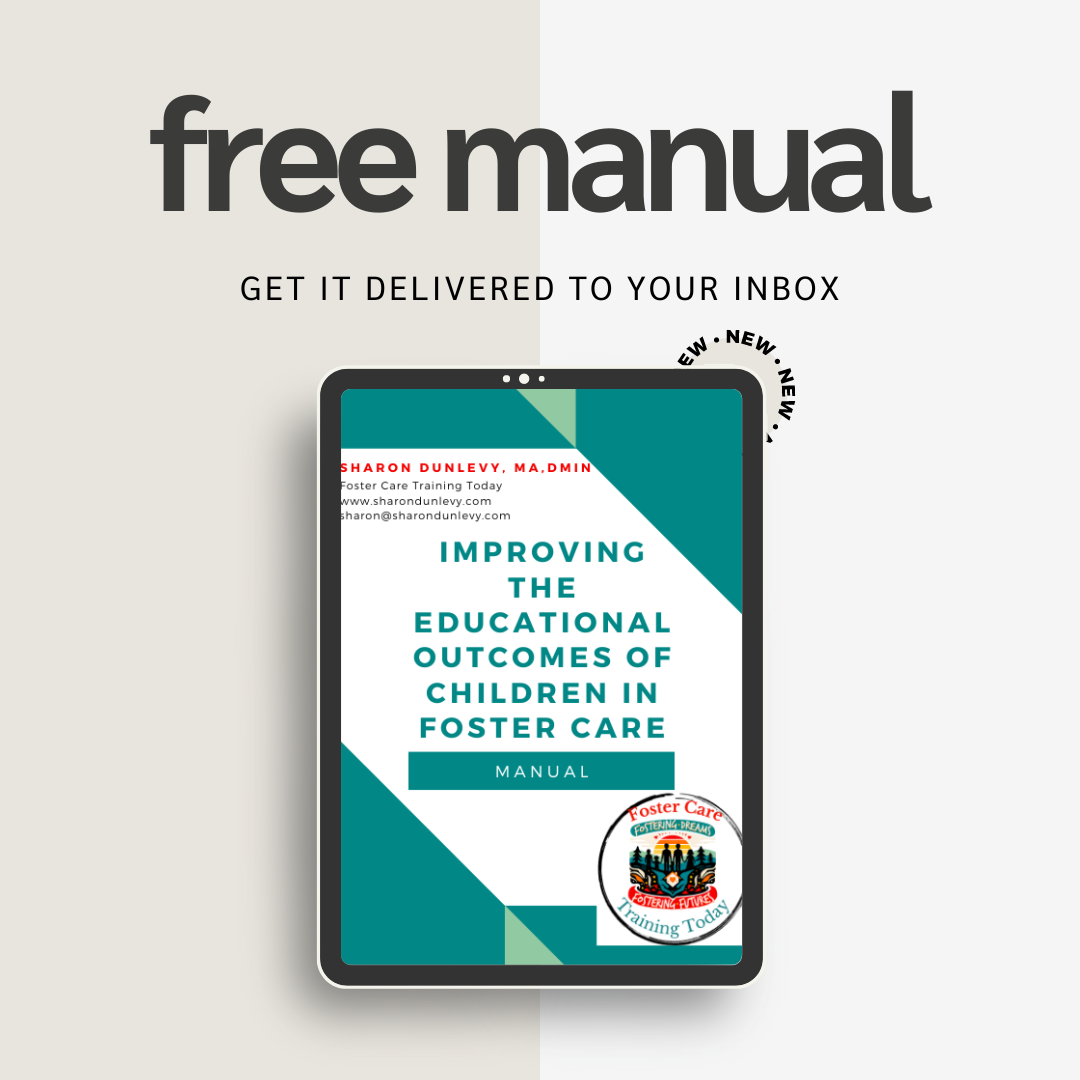
Is Trauma an Educational Disability
All children in foster care have experienced trauma, before and/or after removal from their families. Medically, trauma can be diagnosed as a disability and treated in many ways. However, educationally, trauma is not an approved category under the Individuals with Disabilities Education Act (IDEA), which qualifies children in school to receive additional services and accommodations. This discrepancy in medical and educational diagnoses often contributes to the lack of educational success for children in foster care.
Lack of Educational Success of Children in Foster Care
Currently, the educational results for foster care alumni are very concerning. In 2021, there were over 390,000 children in the United States (U.S.) reported to be in foster care and approximately two-thirds of these are school-aged. 20,000 youth age out of foster care between the ages of 18-23 annually.
However,
25% will not have graduated from high school
20-25% will experience homelessness by the age of 21
20% will be incarcerated by the age of 21
23% will be parents by the age of 21
Only 57% will be employed either full- or part-time by the age of 21
Only 3-12% will earn a college degree (associates or bachelors)
- Annie E. Casey Foundation, 2024
Many of these statistics can be changed but we need to better understand how trauma as an educational disability affects these children and how we can advocate for their educational needs.
What is Trauma?
But what is trauma? While bad things happen to everyone, not everyone has suffered trauma. The difference between a bad situation and trauma involves three main factors: the type of event or series of events, the stress reaction to that event or events, and whether that reaction disrupts daily life.
Imagine you have a car accident. During the accident, you start breathing faster, you're shaking, and you can feel your heart racing. Immediately after the accident, you most likely will have a flight, fight, or freeze response.

You may sit in your car frozen for a few minutes, still shaking and adrenaline rushing through your body. You may vaguely know you need to get out of the car and exchange info, but you can't move. That is the freeze response.
Alternatively, you may jump out of your car and immediately start yelling at the other driver. You may still be shaking, but your body turns the adrenaline into an anger response. That is fight.
Or maybe this is your third accident in the last month, and even though you vaguely know it's wrong, you gun your engine and take off. That is the flight response.
In all three cases, your responses are automatic. Your brain is minimally engaged at this point and there is no difference between a trauma versus a non-trauma response.
Now let's pretend it's a week later. Your car is finally out of the shop, insurance has taken care of almost everything, and you're ready to drive again. If the car accident is not traumatic, then you will get behind the wheel and drive. You might be more cautious; you may even be wary of situations that resemble your car accident, but you don't dwell on those thoughts or feelings. And soon life is back to normal.
If the car accident was traumatic, you may not be able to get behind the wheel right away. You are consumed with the thoughts and feelings that you felt during the accident. Just the thought of driving again, continually brings up fight, flight, or freeze responses. If you're still in a freeze response, you may feel unable to walk near the car. If you're still in fight mode, you may be overcome with uncontrollable anger, possibly directed at something or someone not even related to the accident, not realizing that anger is from the accident. If you're still in flight mode, you may hide out in the house making excuses as to why you don't need to go out in the car today.
If your response to an event overwhelms your ability to function for a long period of time or even return to a semblance of normal, it is trauma. As you can see, every person reacts to potentially traumatic events differently. Two children in foster care could have experienced the exact same events, but their reactions may be completely different.
Clinical Disorders
There are several clinical disorders that relate to trauma, including depressive/anxiety disorders, acute stress disorder (ASD), post-traumatic stress disorder (PTSD), and attachment disorders. All trauma related disorders require diagnosis and treatment by a professional. All of these diagnoses do qualify for services and accommodations under IDEA as part of the Other Health Impairment category.
Other Symptoms of Trauma
Symptoms of trauma can manifest in different ways: emotionally, physically, behaviorally and socially. As you will see, these symptoms often mimic other disabilities and disorders, making it even harder to diagnose and get the children the help they need.

Emotional symptoms can manifest as either feelings that overwhelm the child or the lack of feelings. While it may seem like a relief that a child is not emotional about their traumatic experience, objectively it is not a normal reaction. So, if a child seems too detached or unemotional, it is just as important to get them help as eventually those emotions can erupt and the result can be even worse than those who have already dealt with their emotion.
It is also important to note that emotional symptoms of trauma can mimic depression and anxiety. So, if a child exhibit any of these symptoms, definitely seek professional help, but also let the doctor know that the child has experienced trauma before any medications are prescribed. Medications for depression or anxiety may alleviate some of the symptoms, but it will not help the child overcome their trauma response and can even delay the process.
Physical symptoms of trauma are usually the easiest to spot and usually last the least amount of time. Our body often recovers faster than our mind.
The behavioral symptoms of trauma are often mistaken for ADHD. Just like the symptoms of depression and anxiety, doctors can be quick to prescribe medication for what seems to be ADHD. Medication without therapy will only mask the symptoms. Children of trauma will need to work with professionals to learn how to build positive coping methods to replace their negative ones.
There are other behavioral symptoms that you may see in a child with trauma. All of these require professional help to overcome.
Yet again, social symptoms of trauma can mimic another disorder, those disorders on the autism spectrum. But there are some distinguishing features. For example, both children on the spectrum and children with trauma may have difficulty making eye contact, but those on the spectrum do not do so deliberately. Children with trauma shield their eyes to create distance, so they may deliberately look down or look over your shoulder. Children on the spectrum do not understand the need to make eye contact because they are not attuned to a person's body language and therefore their gaze will wander. It is always prudent to have a child tested if you believe there is a possibility they are on the spectrum.
The combination of the symptoms mentioned before often make school a difficult environment for children with trauma. If the school and teacher are not aware of the effects of trauma, they mistake the symptoms as disruptive, and school disciplinary methods are often not trauma informed. And if the child is not approved for accommodations under (IDEA), the student is more likely to fall behind their peers, often leading to them dropping out of school or not graduating with a full diploma.
Advocating for the Educational Needs of Children in Foster Care
The first step to effectively advocating for the educational needs of children in foster care is to know and understand the laws that can help students in foster care get the support they need.
Second, is to address the gaps in these laws. The largest gap is that none of the laws specifically address the need for trauma-informed training for school staff.

To learn more, check out my Improving the Educational Outcomes of Children in Foster Care at https://sharondunlevy.com/lmoptin
